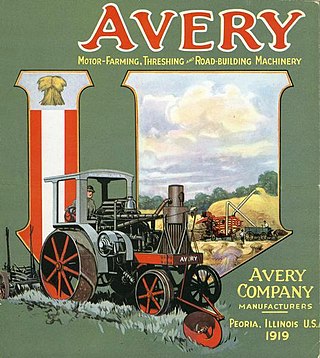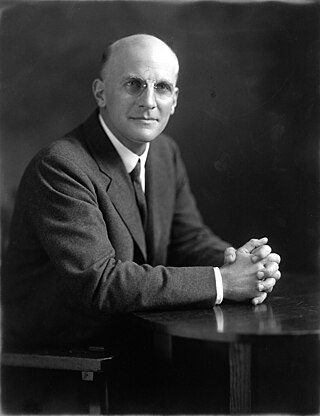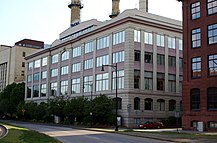
A dip pen is a writing instrument used to apply ink to paper. It usually consists of a metal nib with capillary channels like those of fountain pen nibs, mounted in a handle or holder, often made of wood. Other materials can be used for the holder, including bone, metal and plastic; some pens are made entirely of glass.

The Great Boston Fire of 1872 was Boston's largest fire, and still ranks as one of the most costly fire-related property losses in American history. The conflagration began at 7:20 p.m. on Saturday, November 9, 1872, in the basement of a commercial warehouse at 83–87 Summer Street. The fire was finally contained 12 hours later, after it had consumed about 65 acres (26 ha) of Boston's downtown, 776 buildings and much of the financial district, and caused $73.5 million in damage. The destruction to the buildings was valued at $13.5 million and the personal property loss was valued at $60 million. At least 30 people died, including 12 firefighters.

William Lewis Douglas was an American businessman and politician from Massachusetts. He served as the 42nd Governor of Massachusetts from 1905 until 1906. He also founded and oversaw the growth of the W. L. Douglas Shoe Company, a highly successful Brockton, Massachusetts, business that became one of the world's largest shoe manufacturers. He also opened the first nationwide chain of shoe stores devoted to selling the company's products.

The Parker Pen Company is an American manufacturer of luxury writing pens, founded in 1888 by George Safford Parker in Janesville, Wisconsin, United States. In 2011 the Parker factory at Newhaven, East Sussex, England, was closed, and its production transferred to Nantes, France.

The Waltham Watch Company, also known as the American Waltham Watch Co. and the American Watch Co., was a company that produced about 40 million watches, clocks, speedometers, compasses, time delay fuses, and other precision instruments in the United States of America between 1850 and 1957. The company's historic 19th-century manufacturing facilities in Waltham, Massachusetts have been preserved as the American Waltham Watch Company Historic District.
The American system of watch manufacturing is a set of manufacturing techniques and best-practices to be used in the manufacture of watches and timepieces. It is derived from the American system of manufacturing techniques, a set of general techniques and guidelines for manufacturing that was developed in the 19th century. The system calls for using interchangeable parts, which is made possible by a strict system of organization, the extensive use of the machine shop, and quality control systems utilizing gauges to ensure precise and uniform dimensions. It was developed by Aaron Lufkin Dennison, a watch repairman who was inspired by the manufacturing techniques of the United States Armory at Springfield, Massachusetts, which manufactured identical parts, allowing rapid assembly of the final products. He proposed using similar techniques for the manufacture of watches. Before the American system of watch manufacturing was developed, watchmaking was primarily a European business. It involved making certain parts under the roof of a factory while obtaining other parts from piece workers who used their own cottages as workshops.
A highlighter, also called a fluorescent pen, is a type of writing device used to bring attention to sections of text by marking them with a vivid, translucent colour. A typical highlighter is fluorescent yellow, with the color coming from pyranine. Different compounds, such as rhodamines are used for other colours.

Avery Dennison Corporation is a multinational manufacturer and distributor of pressure-sensitive adhesive materials, apparel branding labels and tags, RFID inlays, and specialty medical products. The company is a member of the Fortune 500 and is headquartered in Mentor, Ohio.
Smith Corona is an American manufacturer of thermal labels, direct thermal labels, and thermal ribbons used in warehouses for primarily barcode labels.

Pilot Corporation is a Japanese pen manufacturer based in Tokyo. It produces writing instruments, stationery and jewellery, but is best known for its pens.

The Avery Company, founded by Robert Hanneman Avery, was an American farm tractor manufacturer famed for its undermounted engine which resembled a railroad engine more than a conventional farm steam engine. Avery founded the farm implement business after the Civil War. His company built a large line of products, including steam engines, beginning in 1891. The company started with a return flue design and later adapted the undermount style, including a bulldog design on the smokebox door. Their design was well received by farmers in central Illinois. They expanded their market nationwide and overseas until the 1920s, when they failed to innovate and the company faltered. They manufactured trucks for a period of time, and then automobiles. until they finally succumbed to an agricultural crisis and the Depression.

Zebra Co., Ltd. is a Japanese manufacturer of writing instruments, established in 1914 by Tokumatsu Ishikawa.
Richard B. Carter (1877–1949), ink manufacturer, was president of the Carter's Ink Company, in Boston and later Cambridge, Massachusetts, from 1903-1949.
James Asbury Allison was an American entrepreneur and businessman. He was the inventor of the Allison Perfection Fountain Pen and with Carl G. Fisher, founded Prest-O-Lite, a manufacturer of automobile headlights. Also with Fisher, Frank H. Wheeler, and Arthur C. Newby he was a founder of the Indianapolis Motor Speedway and the Indianapolis 500. Allison formed the Indianapolis Speedway Team Company later known as the Allison Experimental Company, and later as the Allison Engine Company which was eventually purchased by General Motors after Allison's death becoming the Allison Division of General Motors, a manufacturer of automotive transmissions, aircraft engines, truck engines, and other products.

CSS Industries, Inc., was founded in 1923, as City Stores Company. Its headquarters is at 1845 Walnut Street, Philadelphia, Pennsylvania, with showrooms in New York City, Memphis, Tennessee, Minneapolis, Minnesota, and Hong Kong. The company designs, manufactures, and distributes seasonal and everyday greeting cards and novelties.
Speedball is a US manufacturing company of stationery and art products, based in Statesville, North Carolina. The company was originally established as the "C. Howard Hunt Pen Company" in 1899, to manufacture dip pens.
Sir William Beilby Avery, 1st Baronet was a British philatelist who was entered on the Roll of Distinguished Philatelists in 1921 as one of the fathers of philately. His grandfather was the elder brother in W. & T. Avery, weighing machine makers of Birmingham and until he retired Sir William managed a great expansion of that business.

John Jacob Loud was an American inventor known for designing the first ballpoint pen.

Henry Sturgis Dennison was an American progressive business man, president and owner of Dennison Manufacturing Co. Paper Box Factory, economic analyst, and organizational theorist. He was president of the Taylor Society from 1919 to 1921, and recipient of the Henry Laurence Gantt Medal in 1932.
Howard Russell Smith was born in Clark County, Ohio and on his families citrus farm in El Cajon Valley near San Diego, CA. Smith was an American business executive who was president of the sticker manufacturer Avery Dennison from 1956 to 1975. He remained involved with the company as chair of its board of trustees and later its executive committee until his retirement in 1995.


















